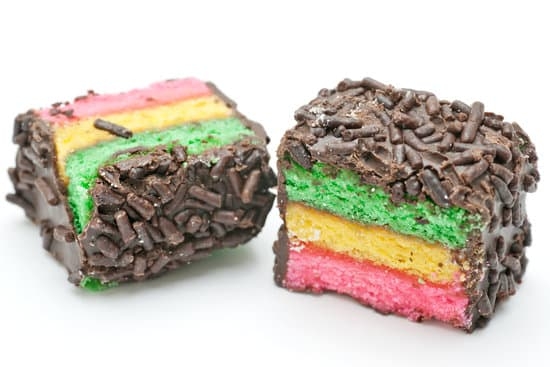Fondant is a versatile and popular ingredient used in cake decorating, allowing for endless creativity and stunning designs. In this article, we will delve into the world of fondant and explore the various techniques to master the art of using it for cake decoration. From creating smooth finishes to intricate details, fondant offers endless possibilities for customizing your cakes.
If you’ve ever wondered how to use fondant for cake decorating, look no further. With different types of fondant available on the market, such as rolled fondant and marshmallow fondant, choosing the right one can make a significant difference in your end result. Understanding the properties of each type and how they work best with your cake can elevate your decorating skills.
Before diving into the fun part of decorating with fondant, it’s essential to gather the necessary tools and materials for a seamless process. From rolling pins to smoother tools, having the right equipment on hand can make working with fondant much more manageable. Additionally, prepping your cake with a crumb coat and ensuring a smooth surface are crucial steps before applying fondant for a professional finish.
Types of Fondant
Fondant is a popular choice for cake decorating due to its smooth finish and versatility in creating intricate designs. There are two main types of fondant commonly used by bakers: rolled fondant and marshmallow fondant.
Rolled fondant is made from sugar, water, gelatin, and glycerin, giving it a pliable texture that can be rolled out into thin sheets for covering cakes. On the other hand, marshmallow fondant is made using marshmallows, powdered sugar, and water, resulting in a softer and sweeter fondant that is easy to work with.
When choosing the right type of fondant for your cake, consider the level of sweetness you desire, as marshmallow fondant tends to be sweeter than rolled fondant. Rolled fondant is ideal for creating smooth finishes on cakes and intricate decorations due to its firm texture once it sets. Marshmallow fondant, on the other hand, is great for beginners or those who prefer a sweeter taste in their cake decorations.
Types of Fondant
– Rolled Fondant: Made from sugar, water, gelatin, and glycerin; ideal for creating smooth finishes and intricate designs
– Marshmallow Fondant: Made using marshmallows, powdered sugar, and water; softer texture that is easier to work with and sweeter in taste
To use either type of fondant for cake decorating successfully, it’s essential to ensure that you have the right tools and materials on hand. From rolling pins to smoother tools and edible food coloring gels, having a well-equipped workspace will make working with fondant easier and more efficient. Remember to knead the fondant until it’s soft and pliable before rolling it out onto your cake surface for the best results.
Tools and Materials Needed for Working With Fondant
Fondant cake decorating can be a fun and creative way to make stunning cakes for any occasion. To successfully work with fondant, it is essential to have the right tools and materials at your disposal. Here are some key items you will need to have on hand:
Fondant
The most crucial component for fondant cake decorating is, of course, the fondant itself. You can either make your own fondant or purchase pre-made fondant from stores. Rolled fondant is commonly used and is available in various colors and flavors, making it a versatile option for decorating cakes.
Rolling Pin
A rolling pin is essential for rolling out the fondant to the desired thickness before applying it to your cake. It’s important to have a smooth surface on your rolling pin to prevent sticking and ensure even distribution of the fondant.
Smoothing Tools
To achieve a flawless finish on your fondant-covered cake, you will need smoothing tools such as a fondant smoother or a flexible plastic scraper. These tools help remove air bubbles and wrinkles from the surface of the fondant, giving your cake a polished look.
Cutting Tools
Having sharp cutting tools like pizza cutters, knives, or specialty fondant cutters will help you create clean edges and precise shapes when working with fondant decorations. Make sure these tools are cleaned and sharpened regularly for best results.
By having these essential tools and materials at hand, you will be well-equipped to start using fondant for cake decorating. In the next section, we will discuss how to prepare your cake for fondant application by crumb coating and smoothing the surface effectively.
Preparing Your Cake for Fondant
When it comes to using fondant for cake decorating, one of the most important steps is to properly prepare your cake before applying the fondant. This involves crumb coating your cake and ensuring the surface is smooth for a flawless finish. Crumb coating helps to seal in any loose crumbs from the cake layers and provides a stable base for the fondant to adhere to.
Crumb Coating
To crumb coat your cake, start by applying a thin layer of frosting or ganache all over the cake. This will help to lock in any loose crumbs and create a smooth surface for the fondant. Use an offset spatula to spread the frosting evenly, making sure to cover any exposed edges or corners. Place the cake in the refrigerator for about 15-20 minutes to allow the crumb coat to set before moving on to applying the fondant.
Smoothing the Surface
After you have crumb coated your cake, it’s time to ensure that the surface is perfectly smooth for applying the fondant. Use a bench scraper or a fondant smoother tool to gently press and smooth out any imperfections in the frosting. Work your way around the cake, taking care to maintain even pressure and create a level surface. This step is crucial as any bumps or uneven areas will show through the fondant once it is applied.
Chilling Your Cake
Before covering your cake with fondant, it is recommended to chill it in the refrigerator for about 30 minutes or until firm. This will help prevent any bulging or stretching of the fondant when it is draped over the cake. A chilled cake also makes it easier to work with and ensures that your final decoration will look neat and professional.
Be sure not to leave it in too long though, as condensation can form on top of your chilled frosted cakes if left uncovered while stored in most refrigerators. With these steps in mind, you are now ready to move on to coloring and rolling out your fondant for decorating your cake.
How to Color Fondant and Create Different Shades for Your Cake Decorations
Coloring fondant is an essential skill when it comes to cake decorating. By knowing how to color fondant and create different shades, you can customize your cakes with a wide range of hues to match any theme or occasion. There are several methods for coloring fondant, including using gel food coloring, powdered food coloring, and even natural options like beet juice or turmeric for vibrant colors.
One popular method for coloring fondant is by kneading gel food coloring into the fondant. Start with a small amount of gel color as a little goes a long way. Knead the fondant until the color is evenly distributed, adding more if needed to achieve the desired shade. Remember that colors can deepen over time, so it’s best to start with less and add more as needed.
Another technique for creating different shades of fondant is by mixing pre-colored fondants together. By combining various colors in different proportions, you can create custom shades and tones that are unique to your design. This method gives you more flexibility and control over the final color outcome, allowing you to experiment and create endless possibilities for your cake decorations.
Implementing different techniques on how to use fondant for cake decorating opens up a world of creative opportunities for creating stunning and personalized cakes. Whether you’re a beginner or experienced decorator, mastering the art of coloring fondant will enhance your cake decorating skills and allow you to bring your artistic vision to life in vibrant colors.
| Methods | Benefits |
|---|---|
| Kneading gel food coloring into fondant | Even distribution of color |
| Mixing pre-colored fondants together | Creating custom shades and tones |
Rolling Out Fondant
Fondant is a versatile and pliable icing that has become increasingly popular for cake decorating due to its smooth finish and ability to be molded into intricate designs. When learning how to use fondant for cake decorating, one of the essential steps is rolling out the fondant to cover your cake smoothly and evenly.
To achieve a flawless finish on your cake, start by dusting your work surface with powdered sugar or cornstarch to prevent the fondant from sticking. Knead the fondant until it is soft and pliable, then use a rolling pin to roll it out into a thin, even layer. Rotate the fondant as you roll to ensure an even thickness throughout.
One helpful tip for rolling out fondant is to lift and reposition it occasionally, making sure it doesn’t stick to the surface underneath. This will help prevent tears or stretching of the fondant. Additionally, using spacers on either side of your fondant as you roll can help you achieve a consistent thickness all around. By following these tips, you can create a smooth and flawless surface when covering your cake with fondant.
| Rolling Out Fondant Tips | Description |
|---|---|
| Dust Work Surface | Prevent sticking by dusting with powdered sugar or cornstarch |
| Rotate Fondant | Ensure even thickness by rotating as you roll |
| Lift and Reposition | Prevent tears by lifting and repositioning the fondan |
Applying Fondant to the Cake
Fondant is a versatile and popular choice for cake decorating due to its smooth finish and ability to create intricate designs. However, applying fondant to a cake can be a daunting task if you are not familiar with the techniques involved. To ensure a successful outcome, it is important to follow the proper steps and methods for draping and smoothing fondant over your cake.
Before applying fondant to your cake, make sure that your cake is properly prepared. This includes crumb coating the cake with a thin layer of buttercream or ganache to seal in any crumbs and provide a smooth base for the fondant. Once the crumb coat has set, lightly dust your work surface with powdered sugar or cornstarch to prevent sticking, and knead the fondant until it is soft and pliable.
To drape the fondant over your cake, gently lift it with your hands or using a rolling pin and carefully place it over the top of the cake. Smooth out any air bubbles by gently pressing down on the fondant with your hands or using a fondant smoother tool. Work from the top of the cake down to prevent any wrinkles or creases from forming.
Trim off any excess fondant around the base of the cake using a sharp knife or pizza cutter for a clean finish. With practice and patience, you can perfect the art of draping and smoothing fondant over your cakes for professional-looking results every time.
Fondant Decorations
Fondant is a versatile and popular medium for cake decorating, allowing for intricate designs and beautiful creations to adorn your cakes. One of the most popular uses of fondant in cake decorating is creating flowers, shapes, and other detailed decorations. With the right techniques and tools, you can take your fondant decorations to the next level and impress your friends and family with stunning cakes.
To create fondant decorations, you will need a few essential tools and materials. Here is a list of items you may need to have on hand:
- Fondant (colored as needed)
- Rolling pin
- Fondant mat or non-stick surface
- Fondant cutters or shaping tools
- Edible glitter or luster dust for added sparkle
Once you have gathered all your materials, you can start creating your fondant decorations. One common technique for making fondant flowers is using flower cutters to cut out petals and then layering them to create a dimensional effect. You can also use shaping tools to add texture or details to your flowers for a more realistic look.
For shapes and other intricate designs, consider using silicone molds or impression mats to add detail and dimension to your fondant pieces. These tools can help you create intricate lace patterns, geometric shapes, or even small figurines to top off your cake.
Remember that practice makes perfect when it comes to working with fondant decorations. Don’t be afraid to experiment with different techniques and styles to find what works best for you. With patience and creativity, you can master the art of using fondant for cake decorating and create showstopping creations that will wow your guests.
Troubleshooting Common Issues When Working With Fondant
Working with fondant can be a rewarding experience, allowing you to create beautifully decorated cakes for any occasion. However, there are common issues that can arise when working with fondant, such as cracking, tearing, and sticky fondant. These problems can be frustrating, but with the right knowledge and techniques, they can be easily resolved.
One common issue when working with fondant is cracking. This can happen if the fondant is rolled out too thin or if it dries out too quickly. To prevent cracking, make sure to knead the fondant well before rolling it out and use a light layer of shortening or cornstarch on your work surface. If you do notice cracks in the fondant while decorating your cake, gently smooth them out with your fingers or a small amount of water.
Another issue that may occur is tearing of the fondant. Tearing can happen when trying to cover a cake with large pieces of fondant or when handling the fondant too roughly. To avoid tearing, roll out the fondant to an even thickness and use gentle movements when draping it over the cake. If tearing does occur, gently patch it together with a small piece of additional fondant and smooth out any seams.
Lastly, sticky fondant can be a challenge to work with and may result in misshapen decorations or difficulty in handling. Sticky fondant is often caused by humidity or warm temperatures in your work area. To prevent stickiness, dust your work surface and tools with cornstarch or powdered sugar before working with the fondant. You can also try chilling the fondant in the refrigerator for a few minutes to firm it up before using it for decorations on your cake.
Pro Tips for Mastering the Art of Fondant Cake Decorating and Creating Stunning Cakes
In conclusion, mastering the art of fondant cake decorating can truly elevate your baking skills and impress your friends and family with stunning creations. By learning how to use fondant for cake decorating, you can transform a simple cake into a work of art. From understanding the different types of fondant to choosing the right tools and materials, every step in the process plays a crucial role in creating beautifully decorated cakes.
One essential aspect of using fondant for cake decorating is learning how to color it effectively to achieve the desired shades for your decorations. Rolling out fondant smoothly and evenly is also key to creating a professional-looking finish on your cakes. Additionally, mastering techniques for applying fondant to the cake, such as draping and smoothing, can take your cakes to the next level.
Troubleshooting common issues that may arise when working with fondant, such as cracking or tearing, is important for overcoming challenges in cake decorating. With practice and patience, you can develop your skills in creating intricate fondant decorations like flowers and shapes. By following these pro tips and consistently honing your craft, you will be able to create stunning cakes that are not only visually impressive but also deliciously enjoyable.
Frequently Asked Questions
How Do You Put Fondant on a Cake for Beginners?
Putting fondant on a cake for beginners involves a few key steps. First, make sure your cake is completely cooled and has a smooth surface. Roll out the fondant to the desired thickness, then carefully lift it onto the cake using a rolling pin. Smooth out any air bubbles and trim off excess fondant for a polished look.
Can You Put Fondant Directly on a Cake?
Yes, you can put fondant directly on a cake! As long as your cake is cool and has a level surface, you can roll out the fondant and place it directly over the cake. Just be gentle when smoothing out any air bubbles or wrinkles to prevent tearing or cracking in the fondant.
How Do You Stick Fondant to a Cake?
To stick fondant to a cake, you can use buttercream frosting, piping gel, or water as adhesive. Brush a thin layer of your chosen “glue” onto the cake where you will be applying the fondant. Place the rolled-out fondant on top and gently press it down to adhere smoothly to the cake surface.

Welcome to our cake decorating blog! My name is Destiny Flores, and I am the proud owner of a cake decorating business named Cake Karma. Our mission is to provide delicious, beautiful cakes for all occasions. We specialize in creating custom cakes that are tailored specifically to each customer’s individual needs and tastes.





